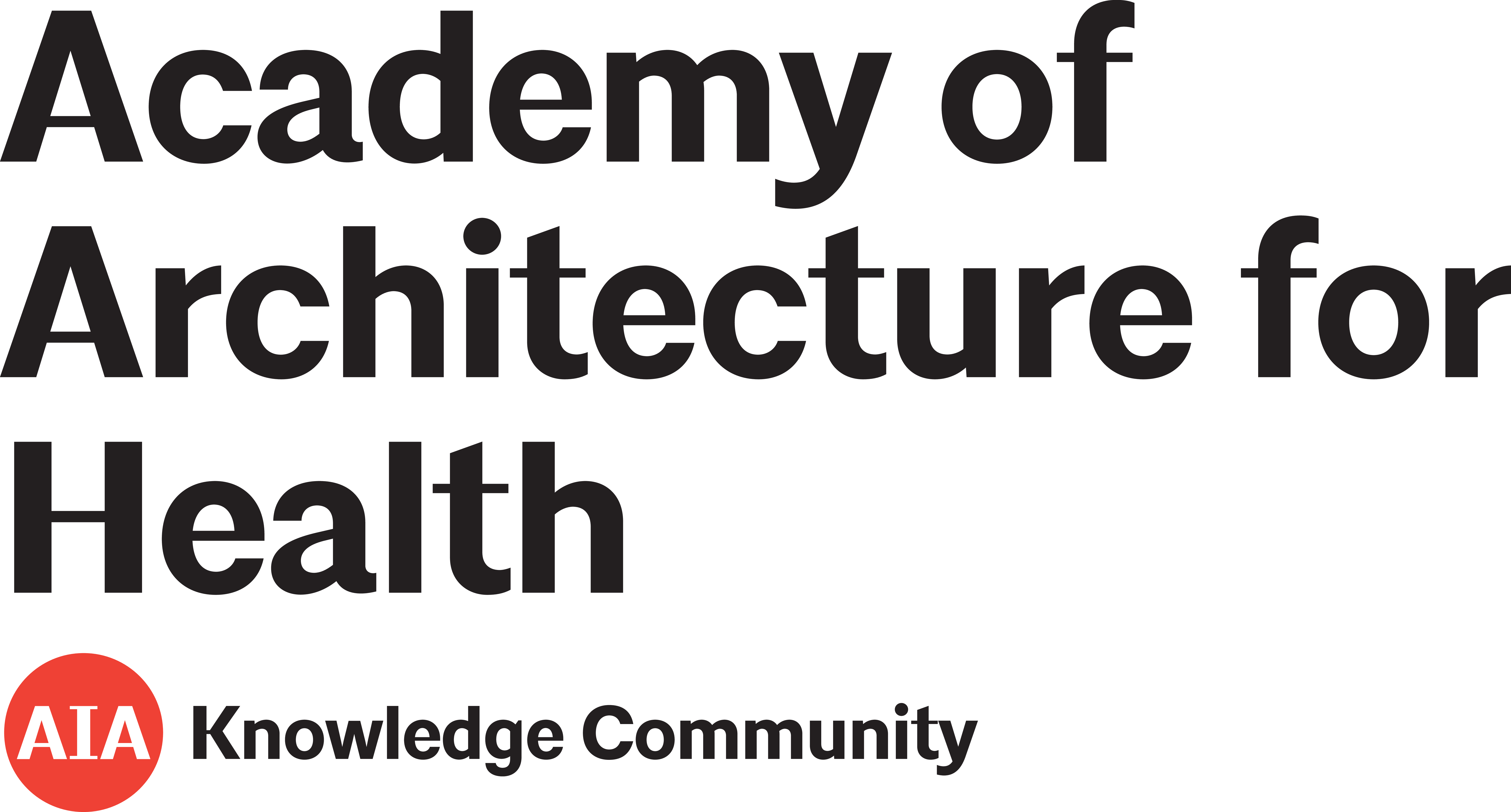Diagnostic Post-Occupancy Evaluation of the Landscape Environments in a Primary Care Clinic: Environmental and Social Performances
Author(s): Jiang, S., Staloch, K., Kaljevic, S.
Healthcare facilities around the world are increasingly employing evidence-based designs like therapeutic gardens to more positively affect the lives of patients as well as the general state of the natural environment itself.
Added December 2018
Developing digital design workflow for architecture based on cleanability as a design parameter
Author(s): Johanes, M., Atmodiwirjo, P., Yatmo, Y. A.
Added December 2018
Does a new spatial design in psychiatric inpatient care influence patients’ and staff’s perception of their care/working environment? A study protocol of a pilot study using a single-system experimental design
2018
Pilot and Feasibility Studies
Journal Article
Issue 1
Volume 4
Pages 1-7
Author(s): Lindgren, B.-M., Molin, J., Lundström, M., Strömbäck, M., Renberg, E. S., Ringnér, A,.
Added December 2018
Tracking and controlling soft surface contamination in health care settings
2018
American Journal of Infection Control
Journal Article
Issue 1
Volume 46
Pages 39-43
Author(s): Sexton, J. D., Wilson, A. M., Sassi, H. P., Reynolds, K. A.
Added December 2018
The experience of person-centred practice in a 100% single-room environment in acute care settings – a narrative literature review
2018
Journal of Clinical Nursing
Journal Article
Issue 13-14
Volume 28
Pages 2369-2385
Author(s): Kelly, R., Brown, D., McCance, T., Boomer, C.
The increasing number of single-patient rooms in healthcare facilities around the world indicates a heightened focus on person-centered practice (PcP). This practice considers how the workflows and physical designs within healthcare environments influence the overall experiences of patients and staff alike.
Added December 2018
The influence of spatial configuration on the frequency of use of hand sanitizing stations in health care environments
2017
American Journal of Infection Control
Journal Article
Author(s): Neo, J. R. J., Zadeh, R.
Healthcare-associated infections (HAIs) affect over 1.7 million people each year, and subsequently cost the U.S. economy approximately $8.2 billion each year. Hand hygiene compliance (HHC), which involves washing hands thoroughly with alcohol-based rubs or soap and water, is widely regarded as a major prevention measure against the transmission of pathogens that cause HAIs.
Added December 2018
The effect of vertical split-flow patient management on emergency department throughput and efficiency
2018
The American Journal of Emergency Medicine
Journal Article
Issue 9
Volume 36
Pages 1581-1584
Author(s): Garrett, J. S., Berry, C., Wong, H., Qin, H., Kline, J. A.
In some emergency departments (EDs), the severity of a patient’s condition is rated on a 5-point scale during admission using the Emergency Service Index (ESI). Under the “split-flow” model of patient triaging, patients with less-severe conditions (rated an ESI 4 or 5) are “fast tracked” so that they can be separated from patients with higher ESI scores, allowing for more efficient resource allocation for all patient treatment procedures.
Added December 2018
Introduction of a horizontal and vertical split flow model of emergency department patients as a response to overcrowding
2018
Journal of Emergency Nursing
Journal Article
Issue 4
Volume 44
Pages 345-352
Author(s): Wallingford, G., Joshi, N., Callagy, P., Stone, J., Brown, I., Shen, S.
Hospital emergency departments (EDs) strive to optimally organize patient flow so that optimal care can be delivered while patient length of stay is minimized. The emergency severity index (ESI) is a 5-point scale used to help medical staff discern the severity of patient conditions; higher ESI scores indicate less-severe medical conditions.
Added December 2018
A systems framework for understanding the environment’s relation to clinical teamwork: A systematic literature review of empirical studies
2020
Environment and Behavior
Journal Article
Issue 7
Volume 52
Pages 726–760
Author(s): Peavey, E., Cai, H.
Added December 2018
Human factors considerations in designing for infection prevention and control in neonatal care – findings from a pre-design inquiry
2018
Ergonomics
Journal Article
Issue 1
Volume 61
Pages 169-184
Author(s): Trudel, C., Cobb, S., Momtahan, K., Brintnell, J., Mitchell, A.
As healthcare environments are being more frequently redesigned to improve patient experiences and provider operations, it becomes increasingly important that healthcare providers themselves understand how these new designs are intended to be utilized. Giving healthcare providers a deeper understanding of the functions and purposes underlying important healthcare design decisions could help reduce potential operational errors or staff frustrations.
Added December 2018
Horseshoe, Cockpit, and Dragonfly: Nurse Movement in Headwall Patient Rooms
2019
Critical Care Nursing Quarterly
Journal Article
Issue 1
Volume 42
Pages 47-52
Author(s): Hamilton, D. K.
Added December 2018
Cross-cultural comparison of physiological and psychological responses to different garden styles
2019
Urban Forestry & Urban Greening
Journal Article
Author(s): Elsadek, M., Sun, M., Sugiyama, R., Fujii, E.
Added December 2018
Understanding Wayfinding Experience of Hospital Visitor through Tours and Maps Analysis
Author(s): Mustikawati, T., Yatmo, Y. A., Atmodiwirjo, P.
Hospitals are complex environments full of many visitors, staff members, and patients. This kind of environment can make simple navigation difficult for visitors in particular.
Added December 2018
Where We Walk Is What We See: Foundational Concepts and Analytical Techniques of Space Syntax
2019
HERD: Health Environments Research & Design Journal
Journal Article
Issue 1
Volume 12
Pages 11-25
Author(s): Haq, S.
Added December 2018
Attractions to Fuel the Imagination: Reframing Understandings of the Role of Distraction Relative to Well-Being in the Pediatric Hospital
2019
HERD: Health Environments Research & Design Journal
Journal Article
Issue 2
Volume 12
Pages 130-146
Author(s): McLaughlan, R., Sadek, A., Willis, J.
Added December 2018
A regional survey on residents’ preferences on patient-centered medical home design in rural areas
2019
HERD: Health Environments Research & Design Journal
Journal Article
Issue 3
Volume 12
Pages 187-205
Author(s): Cai, H., Spreckelmeyer, K., Mendenhall, A., Li, D., Holmes, C., Levy, M.
The patient-centered medical home (PCMH) is a delivery model for primary care that is characterized by the recognition of unique patient needs while providing accessible services, a focus on safety and quality, comprehensive care, and coordinated care.
Added December 2018
Evaluating the Psychosocial Impact of Indoor Public Spaces in Complex Healthcare Settings
2019
HERD: Health Environments Research & Design Journal
Journal Article
Issue 3
Volume 12
Pages 11-30
Author(s): Lacanna, G., Wagenaar, C., Avermaete, T., Swami, V.
Added December 2018
Healthcare signage design: A review on recommendations for effective signing systems
2019
HERD: Health Environments Research & Design Journal
Journal Article
Issue 3
Volume 12
Pages 45-65
Author(s): Rodrigues, R., Coelho, R., Tavares, J. M. R. S.
Studies have shown that designing “patient-centric” healthcare environments can alleviate stress for both patient populations as well as healthcare staff members. Patient-centric designs carefully consider how patients will interact with the built environment, and how the built environment itself can work to make their healing process easier.
Added December 2018
Accessing green spaces within a healthcare setting: A mixed studies review of barriers and facilitators
2019
HERD: Health Environments Research & Design Journal
Journal Article
Issue 3
Volume 12
Pages 199-140
Author(s): Weerasuriya, R., Henderson-Wilson, C., Townsend, M.
Many previous studies have described the benefits of natural environments (or “green spaces”) on overall human well-being. Healthcare providers have increasingly drawn attention to how green spaces within healthcare environments may positively affect both patients and staff.
Added December 2018
Impact of Design on Emotional, Psychological, or Social Well-Being for People With Cognitive Impairment
2019
HERD: Health Environments Research & Design Journal
Journal Article
Issue 3
Volume 12
Pages 220-232
Author(s): Karol, E., Smith, D.
Added December 2018




